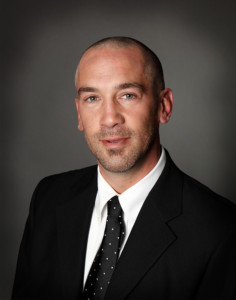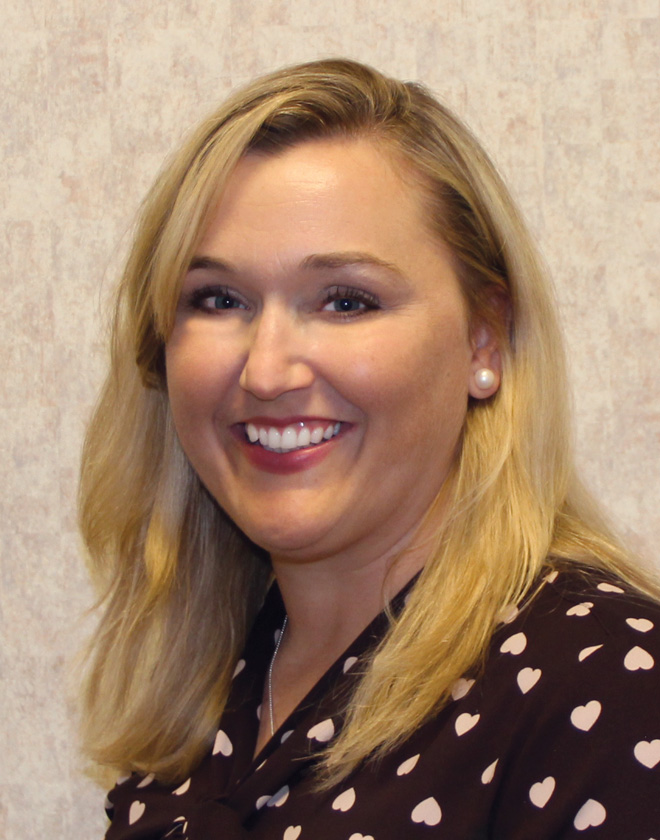Emerging Exposures & A Soft Market Create Challenges For Agents
By Lori Widmer, a Philadelphia-based writer and editor who specializes in insurance and risk management | Rough Notes: April 26, 2018
In 2016, a Florida social services agency opened a file on a young man who had been seen on social media sites cutting himself and making threats to buy a gun. The Florida Department of Children and Families visited the young man’s home and concluded he was a “vulnerable adult due to mental illness” and closed the case two months later, determining that the “final level of risk is low” because the young man lived with his mother and attended counseling.
When Nikolas Cruz opened fire at the Marjory Stoneman Douglas High School in February 2018, killing 17 students, officials in Florida were left to answer some difficult questions as to how this case fell through the cracks.
In the new reality of mass shootings, social service and nonprofit agencies are facing mounting scrutiny of their crisis intervention processes. In fact, many of today’s headline issues—sexual harassment included—are adding pressure to agencies. Such claims, once handled internally, are now becoming part of the social media stratosphere as in-the-moment incidents are live streamed.
“The heavier presence of today’s social media outlets seems to magnify concerns. Matters once considered small can quickly escalate into larger allegations as a result of the added attention drawn from such outlets,” says Christal Huft, executive underwriter at the Irwin Siegel Agency.
Rising trends
In general, pressure is on agencies in the wake of any number of incidents. “The rising incidence of violent acts (e.g., Las Vegas and Parkland most recently) is being debated in the court of public opinion, with many blaming the violence on mental health exclusively,” says Nicholas Bozzo, president of Negley Associates. “However, the violence is as much a social issue. Specific to school shootings, the gunmen have consistently been angry and isolated young men who don’t voluntarily seek mental health assistance. Their potential for violent acts needs to be addressed by schools, police, and communities in close partnership with mental health approaches.”
Yet the problem can be compounded by the processes in place. “Liability issues relating to child welfare and foster care are becoming more challenging,” says Bozzo. “A driving reason for this stems from the number of different organizations and individuals involved: lead agencies, direct service providers, case managers, foster parents, and more.
“Typically,” Bozzo adds, “the one entity that gets absolved from liability is the state itself, which is ultimately responsible for the programs. This is a result of immunity protections, contractual language that forces the above organizations or individuals to indemnify the state, or policy requirements for additional insured status with no ability to subrogate against them. This leaves those insured in the commercial marketplace with responsibility for all the risk.”
Rich Geoghan, specialty lines underwriter for Irwin Siegel, says that the recent publicity surrounding sexual harassment and misconduct could lead to an increase in such claims in the social services and nonprofit agency space. “It’s important to remember that, if a sexual harassment suit is brought, the organization will incur defense costs that can quickly become expensive regardless of whether the claim has merit.”
Another trend putting pressure on the agency space: diversification of services. Mike Liguzinski, divisional president of Great American’s specialty human services division, says that, in an effort to meet client needs, nonprofits in particular are putting a strain on their current insurance coverage. “If there is a breakdown in communication between either the organization and the agent or the agent and the insurance carrier, nonprofits may find themselves scrambling at renewal to find coverage for these services,” says Liguzinski. “Diversifying service offerings also puts pressure on the carrier to provide robust coverage options to this complicated space. These options should include broad abuse or molestation, cyber liability and other broadening coverages.”
Beyond these risks, social services and nonprofit agencies are experiencing claims as a result of falls, medication issues, and abuse allegations. Also, property claim drivers continue to affect the industry. Property undervaluation, says Liguzinski, has become problematic because of the increased costs of construction. “From 2012 to 2017, average lumber costs increased 20% and ready-mix concrete rose 11% in the same time period. Increasing costs of construction along with the recent wildfires, floods, and other natural disasters across the country will likely drive up property premiums. Similarly, the costs to repair vehicles are likely to drive up auto premiums,” Liguzinski says.
Brad Storey, vice president of the risk management division at Irwin Siegel, says there hasn’t been a significant shift in the claims arena. “With respect to the property issues, 2017 was a fairly difficult year from the CAT exposure perspective,” says Storey. “Typically, auto is the loss leader. We’re seeing a spike in rear-ending claims, we suspect because of distracted driving.”
The workers comp picture
To the claim concerns in the social services industry, add workers compensation exposures. Keith Driscoll, senior vice president of Boston Insurance Brokerage, advises that declining loss costs in conjunction with a tight labor market and a soft insurance market are increasing pressure on carriers’ ability to maintain profitability in what historically has been a tough workers compensation class. “The soft insurance environment mirrors the current tight labor market,” says Driscoll. “Carriers and employers are willing to take on additional risk for growth, whether itis payroll versus rate or expanding underwriting appetite.”
Missteps in the hiring process also are creating workers compensation exposures, Driscoll says. “Businesses tend not to place as high a priority on pre-employment screening as they should. Developing a thorough pre-employment screening process in a tight labor market will have long-term benefits not only in productivity but also in expenses as a result of reduced claims frequency.”
Workers compensation insurers are experiencing concerns about rate adequacy in the social services segment. “Carriers that insure social services, especially healthcare, are at an interesting crossroads,” says Driscoll. “The healthcare industry is expanding, especially in social services segments, but in 2017 only three of the 38 National Council on Compensation Insurance states had minor loss cost increases, and 24% of the states had greater than 10% loss cost decreases. This means that, if an agent or carrier renewed every policy from the prior year, they could be down 10% to 12%. That’s why there is pressure to take on more payroll exposure and to expand appetite. The carriers need to write premium.”
Driscoll says competition is such that carriers are willing to expand their appetite for some of the specialty risks in the space, although rates may influence those decisions. “The market is growing, but it also is very soft,” he says. “The growth has created a lot of competition among specialty carriers and an increasing number of specialty programs. As in the labor market example for pre-employment, underwriting discipline needs to be a priority or issues will arise, as in the recent insolvency of Guarantee Insurance.”
Capacity trends
In a market as diverse as the social services arena, it’s tough to determine capacity. “Social services and nonprofit organizations have varying levels of stratification and should not be considered ‘all the same’ when it comes to insurance,” says Bozzo. He says the difference between insuring a food pantry as opposed to a large behavioral health facility is beyond comparison.
He sees some areas of concern that agents and brokers should be aware of. “The increasing emphasis on integrating physical and mental health creates a significantly heightened carrier exposure to med mal claims,” he says. “This is especially problematic as many new writers are taking on these more difficult risk characteristics to combat the impact of reduced pricing in their more benign portfolios. As claims go through their gestation period, the resulting loss frequency and severity will cause many carriers to rethink the profitability of remaining in the social services/nonprofits space.”
Liguzinski says that large agencies may be adjusting their appetites based on the appetites of the smaller agencies they acquire. “Bigger players in the game frequently acquire smaller agencies that insure nonprofits. Because of the availability of the bigger players’ carriers, smaller agencies may be able to increase limit capacities. Likewise, the smaller agencies may adopt an increased appetite capacity, no longer focusing solely on social services. Because of this, two nonprofits that offer the same services may see vastly different coverage as a result of the varying approaches—whether generalized or specialized.”
From a competition standpoint, Liguzinski says emerging markets always will enter the social services space. “Some have entered the market by drastically undercutting price but offering little in coverage that is unique or differentiating. Nonprofits and agents should be wary of new markets that do not have proven stability in the social services space. Other emerging carriers have entered in a more controlled fashion and will likely have the staying power that the price competitors will not.”
Advice for agents and brokers
No matter what kind of social services an organization is offering, agents need to understand their clients’ needs individually, says Dawn Martin, assistant vice president of underwriting in Irwin Siegel’s large accounts division. “Agents need to understand the programs and services that are being provided so they make sure the right coverage is in place and prevent coverage gaps,” says Martin. “Agents need to be in tune with that to make sure they’re staying ahead of the game as far as coverage goes.”
Driscoll says agents and brokers also should concentrate on knowing the exposures and providing the best possible information to the underwriter. “You’re not going to get a second chance to make a good impression with the underwriter on an account, especially one that may have some ‘hair’ on it. Agents need to provide a submission as accurate and complete as possible.”
He adds that leading with price is the wrong approach, but many agents fall into a trap. “Even in a soft market, you want to write an account for the appropriate premium with the best carrier for the insured. Although workers compensation is similar to a commodity, some carriers are better partners for certain industries because of specialization and benefits offered to insureds. The lowest price may have only short-term gains. Especially if an insured has claims, long term this could negatively affect its experience mod and ultimately cause the insurance to be more expensive down the road.”
Read more about ISA’s human & social service insurance coverage highlights and eligibility.
article first featured in The Rough Notes Company, Inc.; April 26, 2018 | online article
About the contributor: Brad Storey, MSW
VP Risk Management Division, Irwin Siegel Agency
To read Brad’s full bio, visit “Our Team page” and click Brad’s photo
About the contributor: Dawn Martin
Vice President of Risk Management Division, Irwin Siegel Agency
To read Dawn’s full bio, visit “Our Team page” and click Dawn’s photo
About the contributor: Christal Huft
Executive Underwriter, Irwin Siegel Agency
To read Christal’s full bio, visit “LinkedIn”
About the contributor: Rich Geoghan
Speciality Lines Underwriter, Irwin Siegel Agency
To read Rich’s full bio, visit “LinkedIn”





Leave A Comment